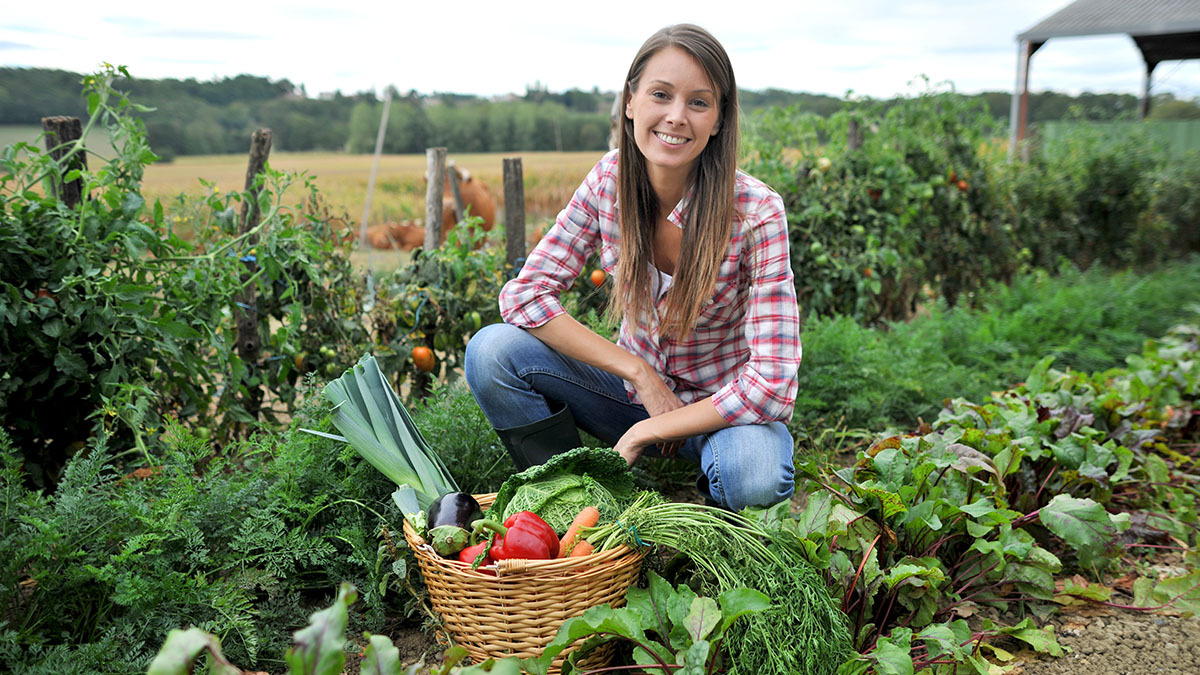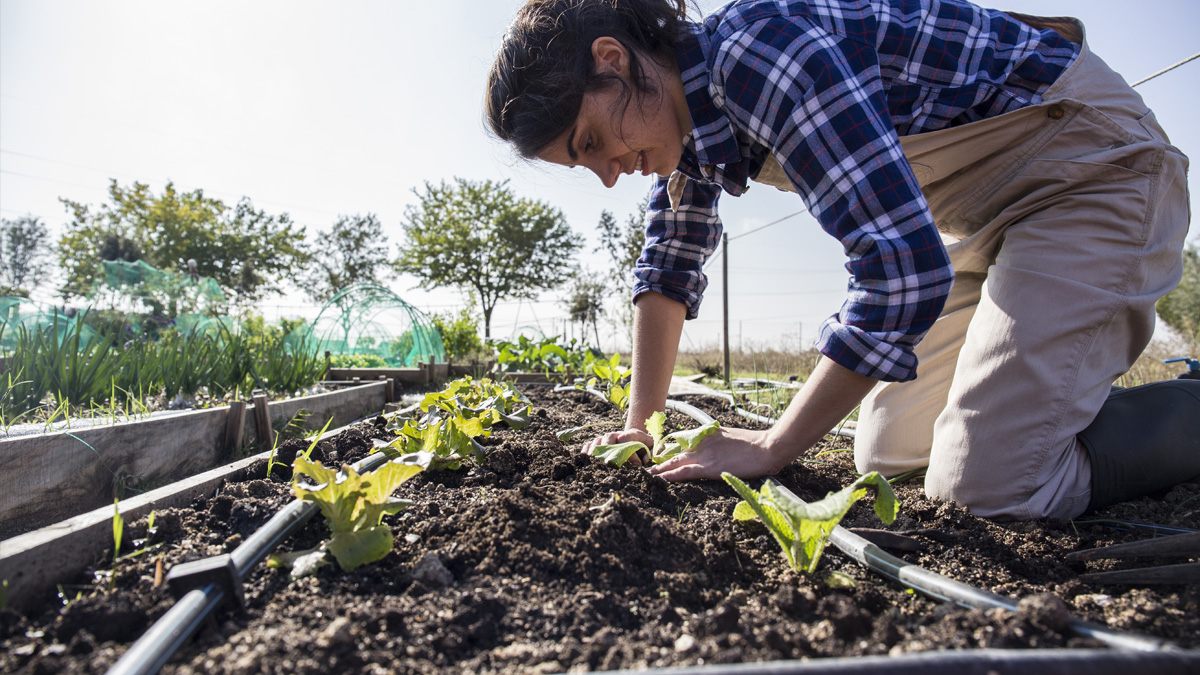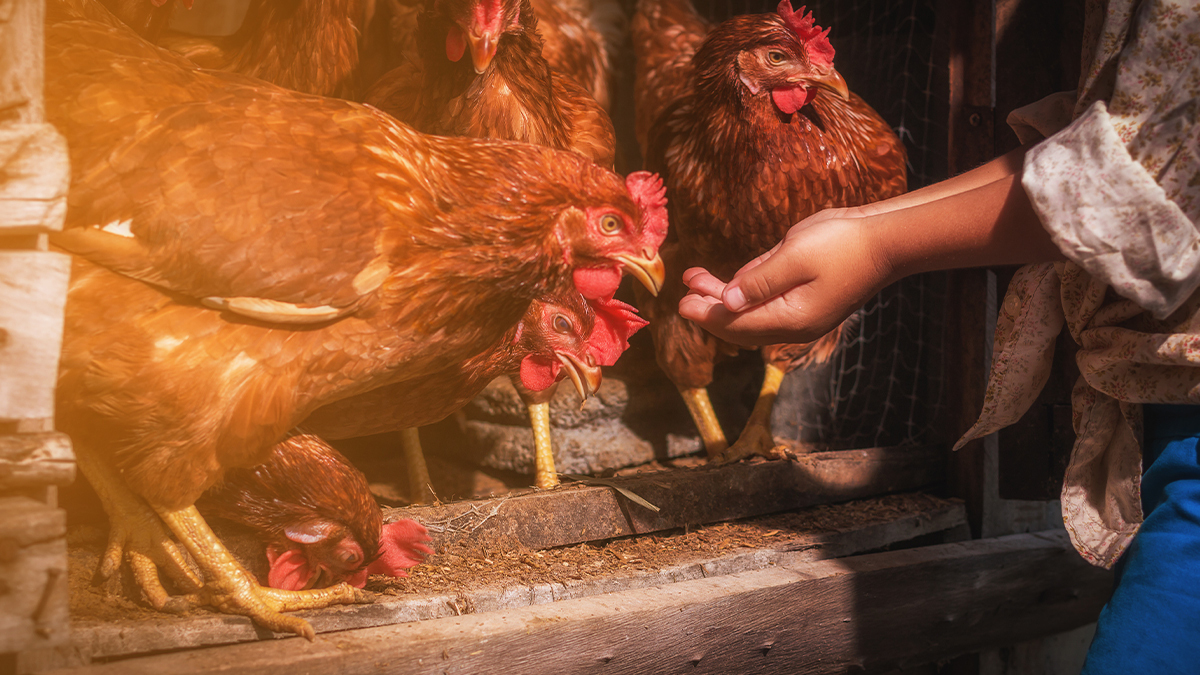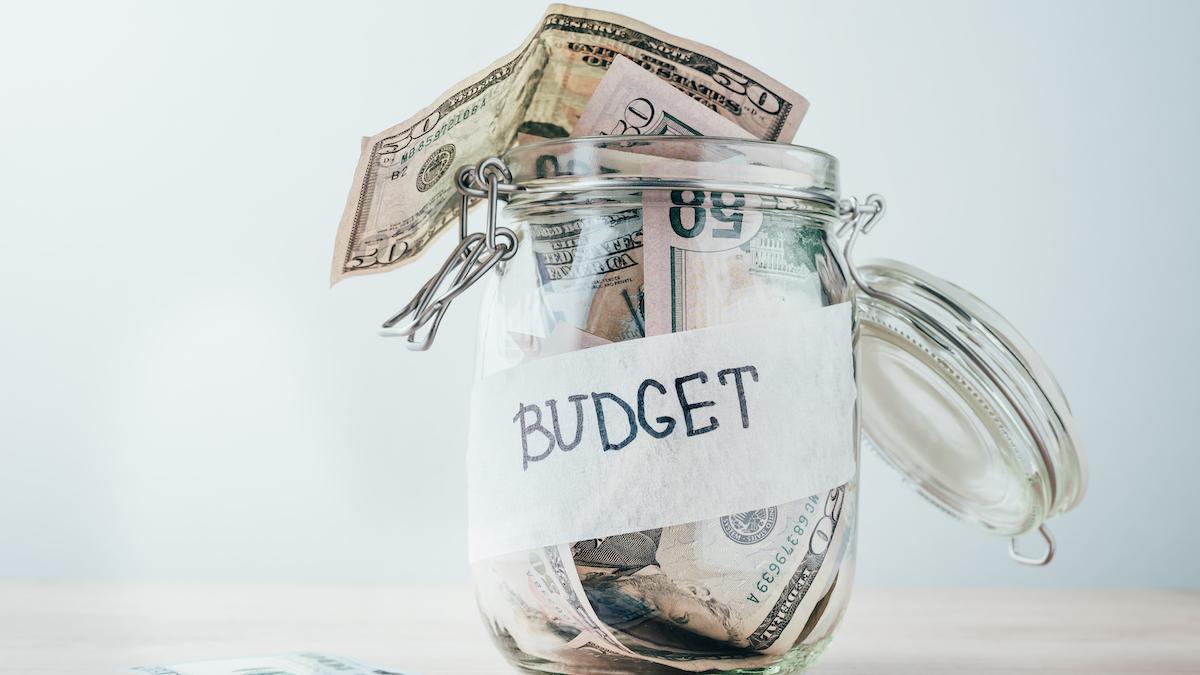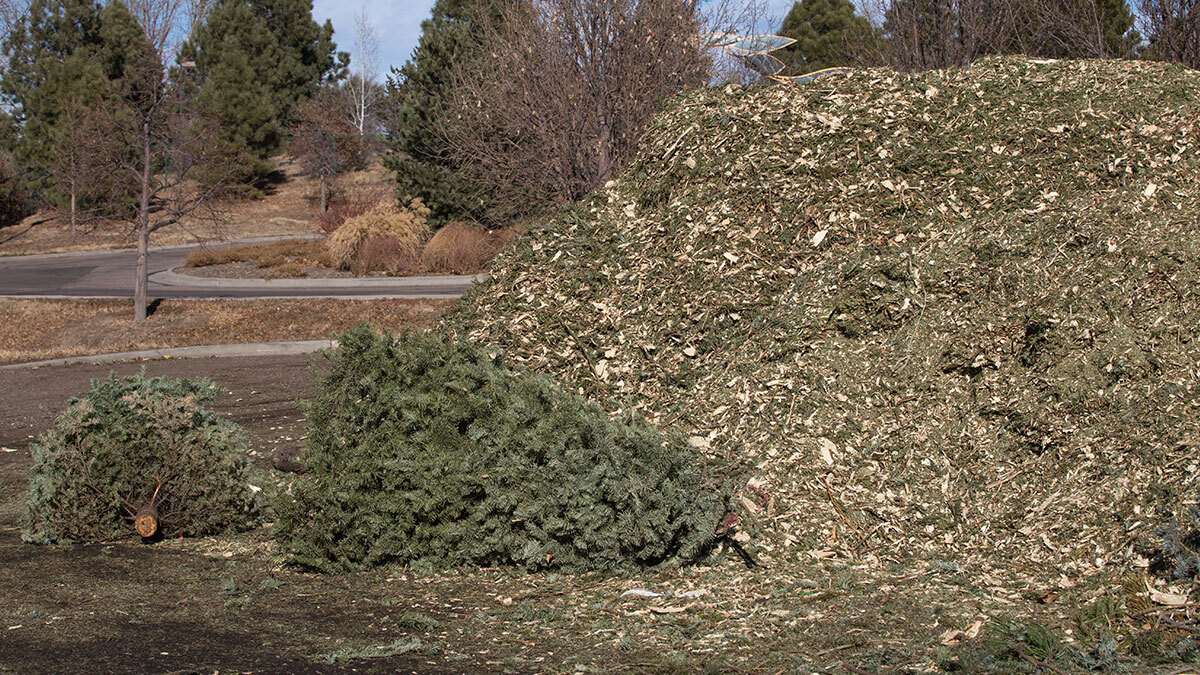on
The goal of homesteading is to live a more self-sufficient lifestyle.
While it may not be possible for many to go off-grid, there are things you can do to get you closer to not relying on the system or others for survival.
It starts by asking yourself, whenever you go to pay a bill, buy food in a store, or purchase a product or service, how you could do it yourself.
If you are just starting on your self-sufficient lifestyle journey, these tips will make the transition from “city living” to “off-grid” seamless.
Grow Your Own Food
For many new homesteaders and those pursuing an off-grid, self-sufficient lifestyle, growing your own food is the perfect place to start.
As you begin to see you can feed your family, you will grow in confidence in your self-sufficiency.
- Start a kitchen garden. Start small with a kitchen garden. Learn how to grow herbs.
- Plant a backyard garden. Start a backyard garden that will grow produce your family will eat.
- Plant successive crops. Once you’ve got the hang of basic gardening, move on to planting successive crops. This is a process where you continually plant seeds 7 to 21 days apart to always have a consistent supply of harvestable produce.
- Plant fruit trees or fruit bushes. Don’t just plant vegetables. If you have space, plant fruit trees, and start your own orchard. If space is limited, add fruiting shrubs or perennials, and grow berries.
- Compost. Composting is one of the most seamless transitions to a self-sufficient lifestyle. Why? It’s making use of what you have and not wasting it. It will be a huge help as a nutrient fertilizer for growing your own food.
- Save seeds. The goal isn’t to be self-sufficient for a season; it’s to embrace a self-sufficient lifestyle. One way to do so is to learn how to save seeds properly. Again, you’re using up what you have. But you are also ensuring you have a continual food source.
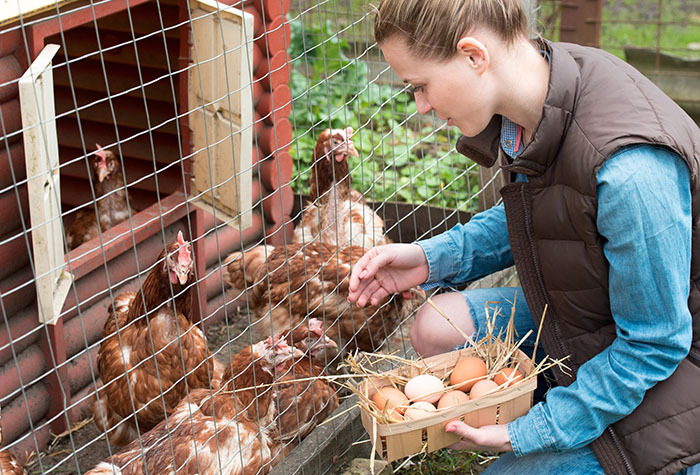
Raise Your Own Food
You want to add some healthy protein to your diet, and the best way to do so for a self-sufficient lifestyle is to raise your own food.
- Raise livestock. Many homesteaders start by raising chickens. Build a chicken coop and enjoy fresh eggs regularly.
- Raise a dairy animal. If you have the space, consider raising a dairy animal. With a dairy animal, such as a cow, you are one step closer to a self-sufficient lifestyle.
- Learn to butcher. While eggs are nice, it is even better to learn how to raise livestock and cattle as a food source. However, in addition to learning how to raise the animals, you must learn how to butcher them properly.
- Learn to hunt and fish. In addition to your homestead food sources, teach your family how to hunt and fish. If you do all these things, you’ll never go hungry.
[Related Read: Dos and Don’ts of Raising Livestock Together]
Cook Your Own Food
If you want a seamless transition to an off-grid, self-sufficient lifestyle, start getting comfortable in the kitchen.
If you are used to eating out in restaurants or cooking with pre-made sauces, off-grid living will throw you.
Instead, take time now to learn how to do the following.
- Learn to make simple dishes with the food you’ve grown. Start by cooking meals using fresh ingredients that you will ideally grow on your homestead.
- Cook from scratch. Learn how to cook food, such as bread, from scratch.
- Learn how to make dairy products. If you plan to raise dairy animals, spend time learning how to make dairy products, such as butter.
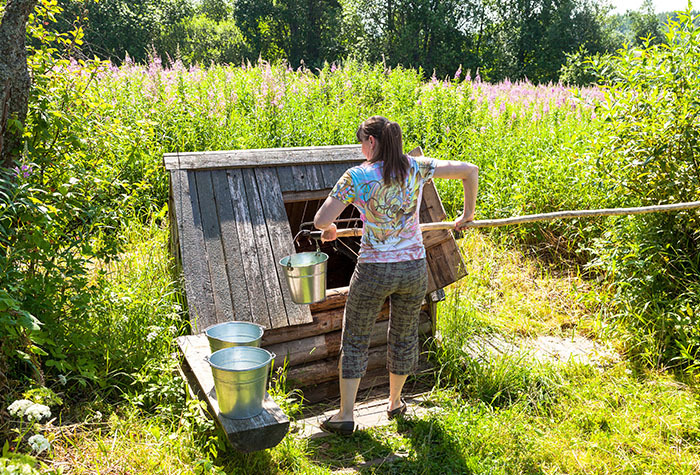
Collect Your Own Water
One of the most common utility payments is for public water.
This is because water is essential.
Some homesteaders find land where they must dig a well, and others simply make the choice to collect their own water rather than using the municipal water system.
- Add a well to your property. Wells are very reliable water sources. You can dig a well or have it dug professionally. You will need to install an electric pump to move the water to and from the ground and into your home. Pumps will work with alternative energy sources, such as solar power.
- Start collecting rainwater. In addition to using a well for drinking water, it is also wise to start collecting rainwater. Rainwater can be used for many things around the homestead, including water for your crops.
[Related Read: Tips for Digging a Well on Your Property]
Power Your Home without Electricity
We’ve all experienced a power failure at some point.
Wouldn’t it be nice not to have to pay for electricity or worry about it going out at an inconvenient time?
There are several ways you can move from relying on the electric company for power to making your home energy more self-sufficient.
- Use an alternative energy source. Fortunately, there are a few different options for alternative energy. These include solar power, wind power or wind turbines, or a micro-hydro system. What alternative energy source will work for your homestead depends on where your homestead is located.
- Invest in green energy tools. If you aren’t ready to go from a utility bill to a wind turbine, you can start smaller, such as investing in green energy tools, such as energy-saving lightbulbs.
- Opt for energy-efficient appliances. If you aren’t ready to give up your energy-powered appliances just yet, begin purchasing energy-efficient appliances.
- Build a wood fireplace or wood stove. If you don’t have a wood-burning fireplace, make it a goal to build one as soon as possible. This is the key to heating the homestead in the cold months.
- Keep a backup generator. As much as you want to rely on alternative energy sources, there will be times when nature is against you (such as not enough sun to power solar homes or enough water for a micro-hydro system). In these events, a backup generator will be lifesaving.
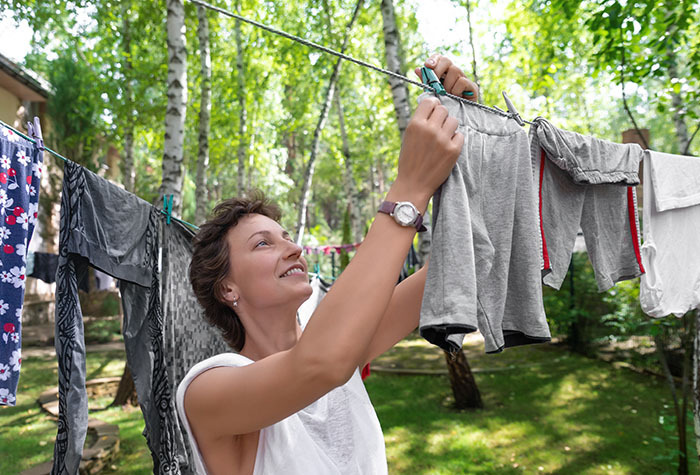
Change Your Habits
An essential part of embracing off-grid, self-sufficient living is changing your habits.
As you walk through your day, take time to think about how you could do things in a more self-sufficient way.
Here are some examples.
- Start line-drying clothes. Instead of using a clothes dryer, hang up the line and dry clothes the old fashioned way.
- Use up what you have. Homesteaders should never throw anything away until they have considered how they may reuse it. Food scraps can be used to make soups or broths or thrown in the compost bin. Old clothes can be mended or used as rags.
- Try to DIY before you pay someone else. Instead of relying on others, make attempts to do things on your own first. Go to the library for how-to books. Watch YouTube videos. Meet up with other homesteaders and learn from them.
- Make your own DIY cleaners. One of the fastest ways to embrace a self-sufficient lifestyle is to start making your own DIY cleaners. You don’t need to buy Clorox or laundry detergent. You can make your own using supplies you already have.
Stock Up for Winter
Being self-sufficient means preparing for the long term.
You must think ahead.
- Learn how to preserve food. Learn different methods for preserving food (freezing, dehydrating, canning, pickling, etc.) and put them into practice.
- Stock the pantry with essentials. Keep your pantry stocked with essentials regularly used on the homestead for meals, such as rice, beans, and pasta. See also: Standard Spices for Every Homesteader’s Pantry
Get access to premium content and more!



